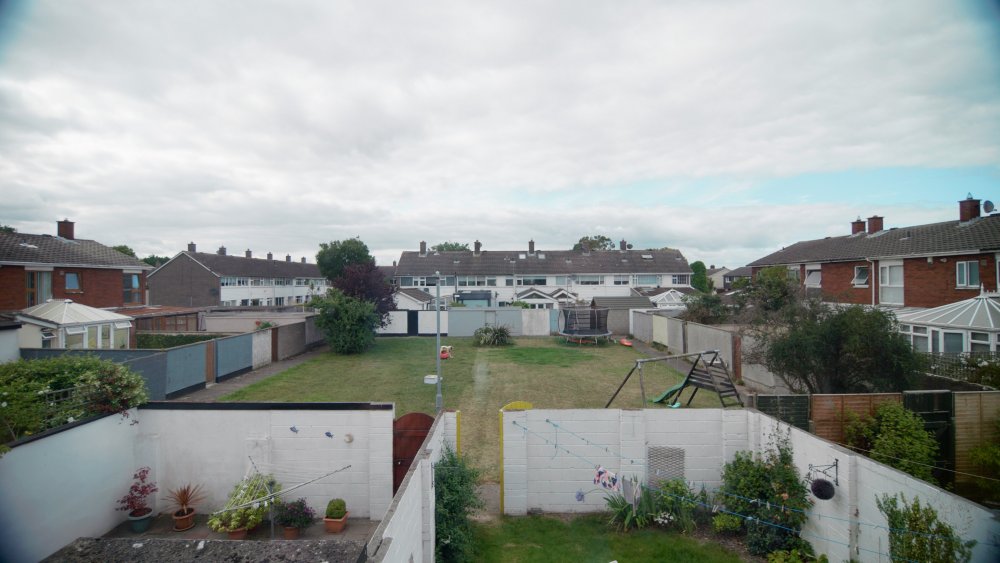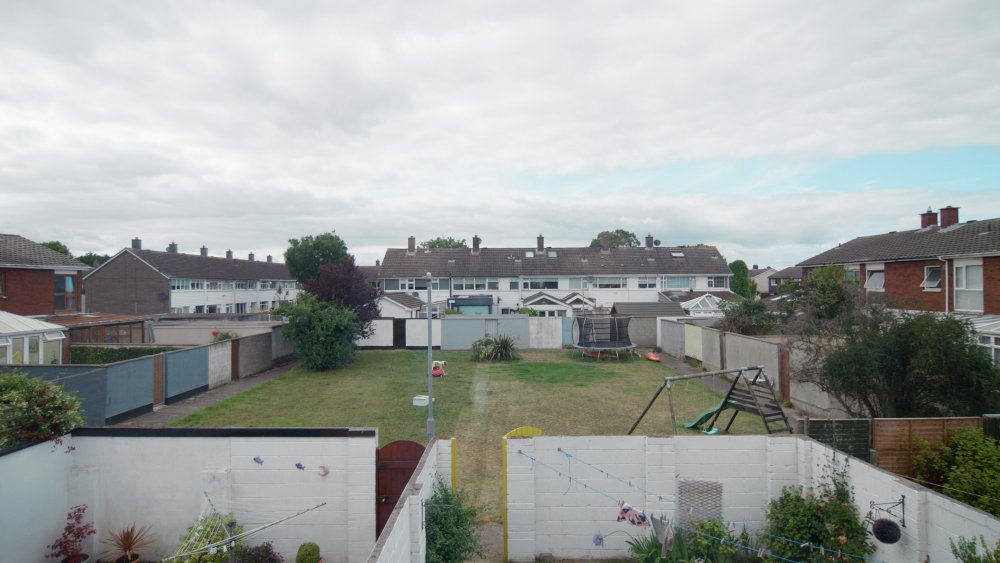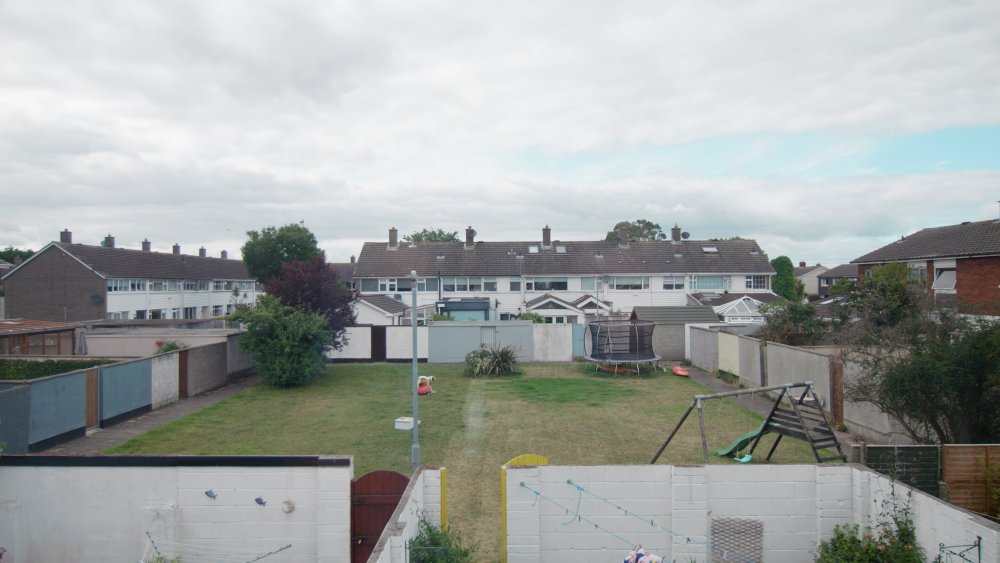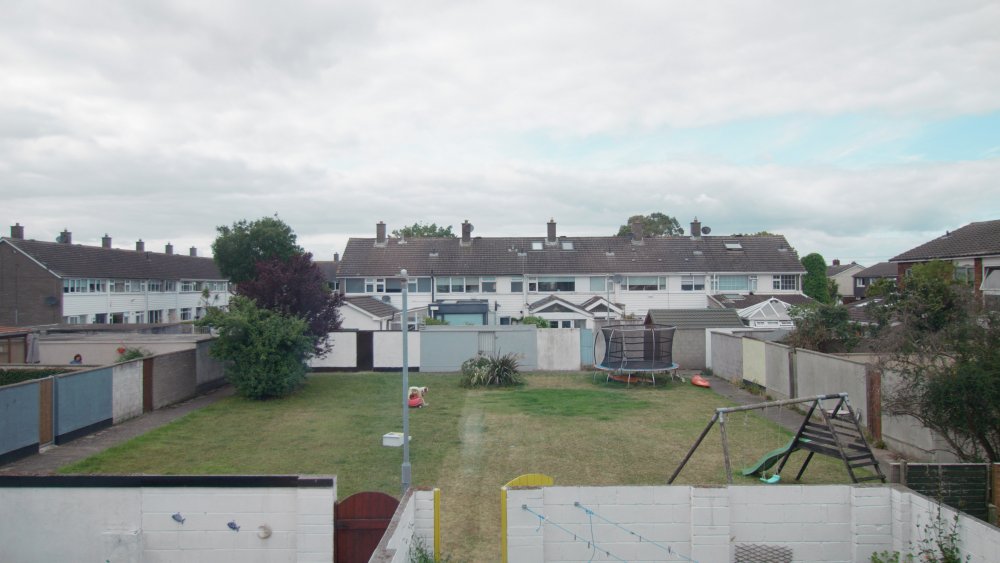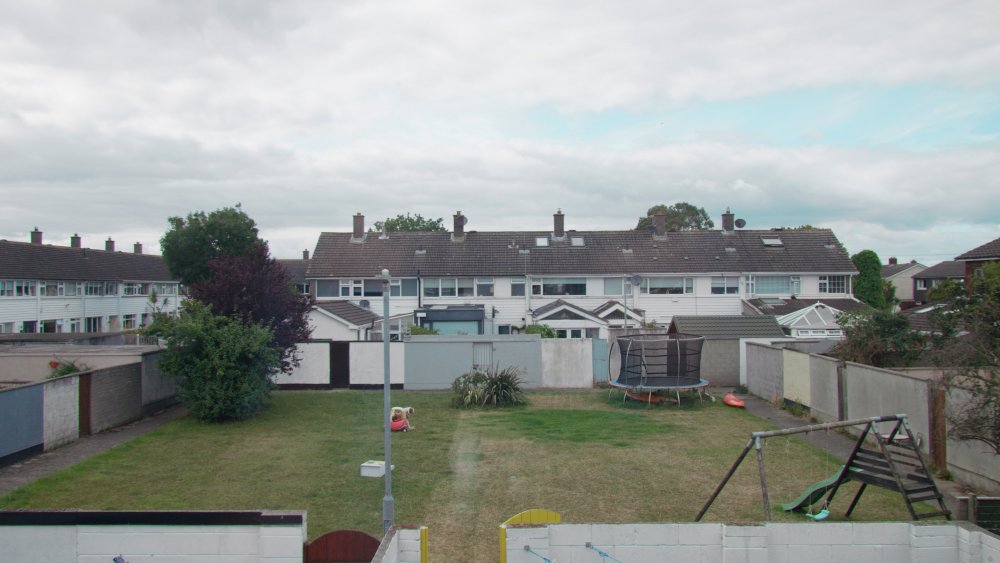Leaderboard
Popular Content
Showing content with the highest reputation on 07/26/2022 in all areas
-

New Firmware for R5/R6/R3
markr041 and 2 others reacted to Andrew Reid for a topic
Eh? Where did I say it was "burning hot"? There are two separate discussions going on here. What type of overheating do you still think is the problem? Do you really think to avoid skin burns the camera needs 1 hour cooling off timer set in firmware plus arbitrary timers for 2 years upon release, then quietly removed with no explanation? First discussion is about what the camera hardware is capable of. The hardware we pay for should be fully usable. Are the operating temps of the CPU and image sensor ok under sustained load. As you see from your GPU or CPU these peak temps are reached within minutes, then stabilise. Is the same with the EOS R5. The temps stabilise and the alloy housing acts as a passive cooler to dissipate the heat to the air. Second discussion is the external temp in contact with skin and how hot is too hot or against consumer regulations and whether it can cause skin burns. If Canon is trying to avoid this, then why remove the limitation now? Did the rules change? I don't think so somehow. Then there is the related discussion of Canon segmenting the market and whether they wanted EOS R5 to be used in place of R5C and C70 for pro video production. All three of these were planned at same time with staggered release schedule. What capabilities are fully reliable on which models is a question of firmware not just hardware. So to answer discussion 1 - We proved way back in 2020 that the EOS R5 hardware was capable of running for long periods even in 8K with the EXIF temps never going above 65c and the battery pull + screw in the battery door trick was possible to reset the 'overheating' timer counting down in firmware. It was capable of restarting a recording immediately - but remember the old firmware had a lengthy 45 minute to an hour long 'cooling off period' which was clearly bullshit because it didn't even take into account actual temperature sensors in the camera. For example the camera being in a fridge recording 8K where it would cool to room temp within a couple of minutes after stopping. It still had that arbitrary timer blocking you from the features and not allowing the use of the hardware you paid for to the full potential. I was contacted by a class action lawyer in the US during these discoveries, and the whole thing was talk of the town. Canon were really on the back foot PR wise. All their own fault. They had created the perception of an unreliable but expensive flagship camera, and that their new hardware was overheating. So rather than recall it and change the firmware, or even just apologise to their users who had spent the money on a defective cripple hammered camera, they enlisted their client journalists to say nice things about it and brought out a faux-fix firmware update that did barely anything. So that was the situation for EOS R5 owners for 2 years until this complete U-turn last week. I don't. I have no use whatsoever for "unlimited" recording times. I just want normal predictable behaviour from a camera especially for £4000. 30 min limit is fine by me, I am not an event shooter. Remember how severe the problems were with the original EOS R5 firmware - you could be in the menus or just shooting a few stills and an hour later the camera would be locking you out of the high quality 4K mode and 8K. So by my standards I only have to be able to use the camera normally without being blocked by fake timers. I kept saying all along after the magic screw trick, it was a firmware restriction, not real overheating. Nobody would listen. Even Magic Lantern were saying it. Nobody listened to them either. Now the lifting of the firmware timers proves it. But still people's minds don't change. All I can say is I can explain it to you, but I can't understand it for you.3 points -
The "example" R7 video posted above is obviously color graded with teal and orange, and in no way shows the "colors' of the R7 or the DR, or skin tones. Here is a video, shot in Clog3, in 4K 60p in crop mode, giving an almost 3X FF crop, using the cheap EF S 18-135mm kit lens. The "grade" is just the daVinci Studio transform from Clog3 and canon.cine color to REC709: And this tests the audio, same specs as above:3 points
-

Lenses
PannySVHS and one other reacted to hyalinejim for a topic
Yes, I had been looking at that first and was about to get one but then I stumbled on a mention of the Tokina and it seemed to me after a bit of research that it holds sharpness a bit better towards the corners and also there is very little vignetting other than the limits of the image circle.2 points -
New Firmware for R5/R6/R3
gt3rs and one other reacted to douglaurent for a topic
Did record 4x 30min 8K Raw with 1.6 and, no wonder not having a fan, the camera does extremely overheat already after the first 30 minutes. It just doesn't shut down like before. Using it this way over and over again can't be healthy for cards, batteries and the camera itself. So Canon is still correct with their protection advice and time limits. The Sony A1 does also overheat and also shuts down. Nobody did criticize it while being much more expensive. I never understood why a small 4000 Euro camera should be expected to deliver the highest image quality at unlimited recording times.2 points -

New Firmware for R5/R6/R3
markr041 and one other reacted to Andrew Reid for a topic
First test done. Went to 29m59sec maximum continuous recording length for 4K HQ with no issues whatsoever. Could start another clip straight after. No overheating warning. Camera body feels very hot all over, makes a nice hand warmer.2 points -

Stabilisation in post
herein2020 reacted to webrunner5 for a topic
I think the gyro only works in 4K and you have to use only panny or oly lenses.1 point -

New Firmware for R5/R6/R3
markr041 reacted to Andrew Reid for a topic
You must have been doing very light use and very short shoots in those modes, especially 4K HQ. The question is why didn't the camera perform like this in the first place 2 years ago? Why only fix it now? 2 years!1 point -

Shooting Open Gate
webrunner5 reacted to M_Williams for a topic
Personally, I LOVE being able to shoot open gate (whether it's 4:3 on a M4/3 or 3:2 on APS-C/FF). You don't lose anything at all (except larger files), it gives you the ability to reframe a DCI or 16:9 image vertically without cropping, and is far superior for tighter aspect ratios below 16:9. 1.66 is one of my favorite aspect ratios and so shooting 1.5:1 (as in the X-HT2s) is awesome. I'm really shocked that Panasonic has been the only one to offer open-gate - whether it's 4:3 on the GH series or 3:2 on their S line, so I'm very, very happy to see Fuji offer it, especially on an APS-C/Super 35 sensor which is my preference for filmmaking. Also, I was extremely happy to see someone offer 6K - everyone seemed to jump straight from 4K to 8K (as far as MILC hybrids go anyway). 6K is, right now, pretty much perfect for me. Enough extra resolution to allow for cropping/reframing/stabilization and still end up with 4K, but not so much that the file sizes are overwhelming huge (and the processing power required, depending on the codec). Generally speaking, 1TB of 4K footage would require ~2-2.25TB for 6K and ~4-5TB for 8K. Once you get up there, mainly with SSDs, the cost difference above 2TB is huge. Not to mention how much more unforgiving 8K is for focusing mistakes. 6K just always seemed like the sweet spot to me, and no one was offering it except the Canon R3. Which cost as much as an Ursa Mini Pro 12K or RED Komodo.1 point -
Stabilisation in post
webrunner5 reacted to stephen for a topic
Use 180 degree rule and in most cases stabilization in post works fine. But of course it is used to smooth and compensate for small movement and jitter when camera itself is panning or moving rather slowly. I try to use proper technique while shooting in order to get stable footage at first place. Most of the time shoot handheld without gimbal. One of the keys to get stable footage without gimbal or IBIS or IS in lens is to use heavier rig (2-2.5 kg). The other is to use good technique, lots of tip and tricks. For example with top handle and 35mm or wider lens can even do short walks. For long walks or runs will not shy away and use gimbal. Still proper walking technique is needed as gimbal can't compensate for up and down movement. BMPCC 4K/6K Giro stabilization was kind of disappointment for me. In all tests normal 'warp' stabilization in Resolve worked better than gyro. Unfortunately there is no substitute for good shooting technique and heavier rigs or gimbals. My observations are that in the professional video/cinema world nobody complains about camera size or rigs. You either go after ultimate picture quality (whatever this for you is) or convenience. I often watch this video about DP Hoyte van Hoytema and Christopher Nolan. Why Christopher Nolan & Hoyte van Hoytema Films Everything In Camera & IMAX Impressive how big the iMax 70 mm film camera is. Somebody has to help put it on Hoytema's shoulder. Аs they say: Go big or go home. 🙂1 point -

Lenses
PannySVHS reacted to webrunner5 for a topic
I had that lens and did the hack myself. Yeah 13 to 14mm is about right on FF. Cheap thrills, the adapter is around $32.00 I think.1 point -
Stabilisation in post
majoraxis reacted to herein2020 for a topic
The R5 has hands down the best IBIS that I have ever used, I shot handheld a few shots with a 70-200 at 200mm and it was incredibly stable while filming closeups of people as a B-cam; so I do think modern IBIS systems can equal or be better than the BM gyro results. The difference for me is that when IBIS fixes instability there is no weird jitter or warping that I saw with the gyro results...at least not with the longer lenses (35mm and above). The other benefit of IBIS vs gyro is there is no cropping required...with IBIS what you frame is what you get, with post stabilization and gyro stabilization you have no idea ahead of time how much cropping will be needed. For my particular niche in the industry (fashion), it is very important to not have to crop because the crop could be in the worse possible place (middle of the model's head for example), rendering the shot unusable. Just because it shoots 6K doesn't mean you want to leave tons of room around every shot and frame differently to accommodate post cropping later; sometimes you need the exact composition that you shot. Based solely on the video above, I think gyro stabilization is a lot like post digital stabilization....very good for certain types of movements and very jittery for others; whereas IBIS is excellent regardless of the movement. DJI's Osmos and GoPros have the best In Body Digital Stabilization (IBDS?) out there. The working theory is that because the data rates are lower due to the smaller sensor, it takes less processing power to stabilize them (and other action cameras) than the larger cameras which is why their digital IS works so well. Another theory is that the sensor is simply larger for regular IBIS systems so the IBIS naturally will have to work harder to stabilize it. The GH5's IBIS for example blew away the FF competition for years in the IBIS department. Manufacturers typically rate their IBIS system based on stops of light. For example, the R5 according to Canon has an IBIS rated at 8 stops of light...the highest in the industry for MILCs. Most manufacturers are rating their IBIS systems around 3-5 stops of light. I think the S5 was rated at 5 stops. Not sure who invented light stops as a measure of IBIS performance, but it is the standard now. You can read more about how it is measured here: https://www.canon-europe.com/pro/stories/8-stops-image-stabilization/ I will say, after this past week, the R5 without a doubt has the best IBIS I've ever encountered in a FF body. I could hand hold at 200mm and make it look like I was on a tripod for an extended length of time; very impressive in my book.1 point -

Lenses
PannySVHS reacted to hyalinejim for a topic
I'm a sucker for cheap wide angle and have found a nice contender for APSC and speedboosted M43. The Tokina 12-24 f4 is a well regarded wide angle lens for APSC Nikon and Canon DSLRs, but you can totally get away with using it on larger formats to a certain extent. It has good build quality, very little vignetting, is fairly sharp out to the edges and has very little distortion in the middle of the range. They go for very little now and I picked up a copy for €150 including postage on eBay. Here it is on a GH6 with 0.64x Speedbooster wide open at f2.5 12mm (15mm full frame equivalent, 7.5mm M43 equivalent). Vignetting is evident. This is a lens for APSC formats, after all. 15mm (19mm FF / 9.5mm M43 equivalent). Vignetting is mostly gone. Could maybe go a little wider stopped down a bit. 18mm (23mm FF /11.5mm M43 equivalent). This is the minimum you can use it on full frame, where corners are quite soft at 18mm but speedboosted on M43 the corners look decent. Any distortion levels out around here and is quite good as we zoom in further. 20 (25.5mm FF /13mm M43 equivalent) 24 (31mm FF /15mm M43 equivalent). Purple/green fringing is quite bad at 24mm, probably the biggest problem with the lens. It cleared up for me using Digital Film Tools Chromatic Aberration effect. All in all, I'm quite pleased with it and would definitely recommend it as a cheap wide angle option for Speedboosted M43. On full frame it suffers a lot with corner softness, but is still good for square format photos if Insta is your thing!1 point -

New Firmware for R5/R6/R3
solovetski reacted to Andrew Reid for a topic
Well since it is 35 degrees C in Berlin today I decided to do a quick test. Put it in 4K HQ mode (8K sensor readout) and record until card fills up. I'll let you know what happens. (Don't expect any melting! The magic screw trick showed it could go for hours virtually non-stop shot after shot in 8K!) Of course the client reviewers will all now be out praising Canon for fixing the non-existent problem they tried to cover up.1 point -
“The new S5H autofocuses like a charging male goat”. That’s the headline I want to read.1 point
-
Any more news on the S5H? From what I've seen it looks like a Sony A7S3 type. 4K beast. It would really need much improved AF, LCD and EVF as well as continuous recording in 10bit and no crop at less than 2500€ to make any sense.1 point
-
Panasonic S5 User Experience
IronFilm reacted to newfoundmass for a topic
Every camera in my price range has a limitation that I wish wasn't there. It just so happens that the S5's limitations are the ones I can live with the most. Same with the GH5. I don't think getting rid of your Lumix cameras and going with a Canon set up makes you a Canon fanboy. I think it just means you're making the best choice based on your situation and needs. The funny thing for me is that out of everyone it might be Olympus that checks the most boxes for me right now. I'm just in no position to purchase 2 (or 3) OM-1 bodies even if they weren't backordered. Strange times, though!1 point


